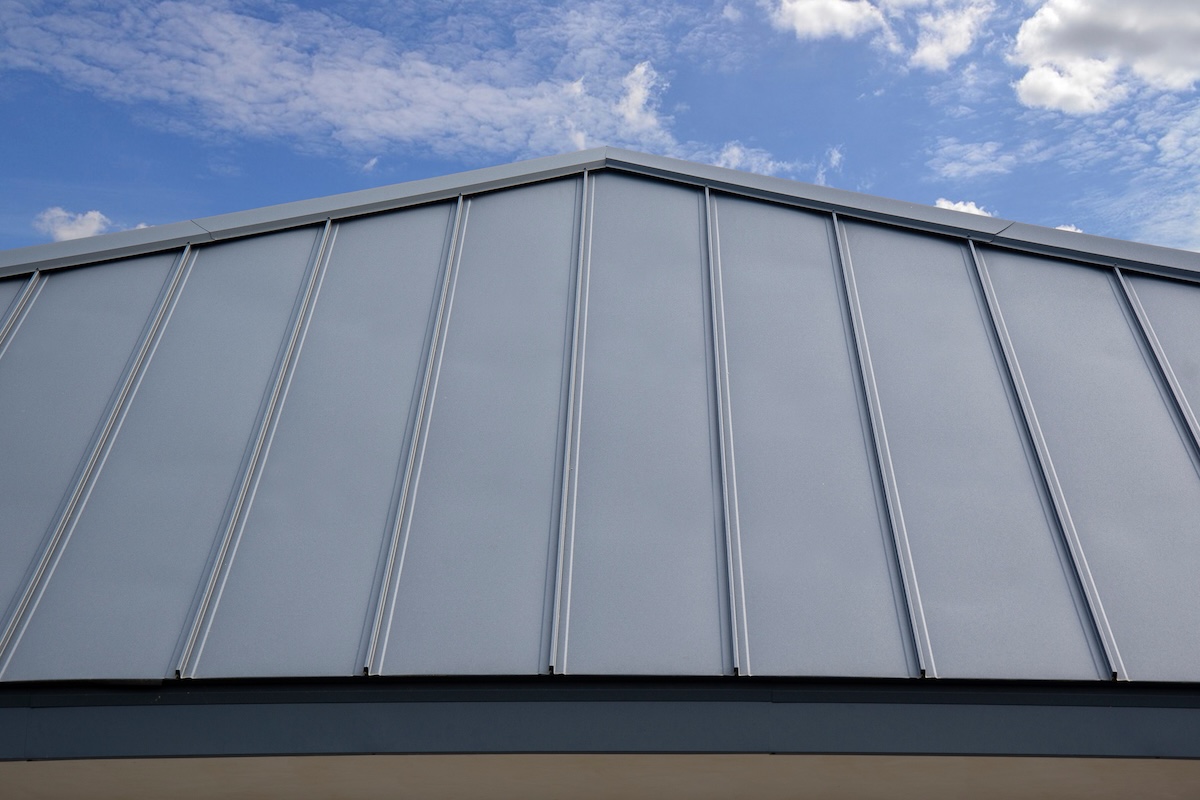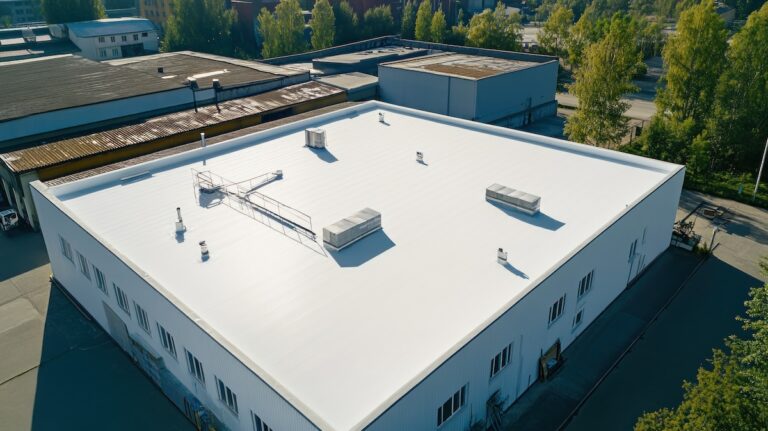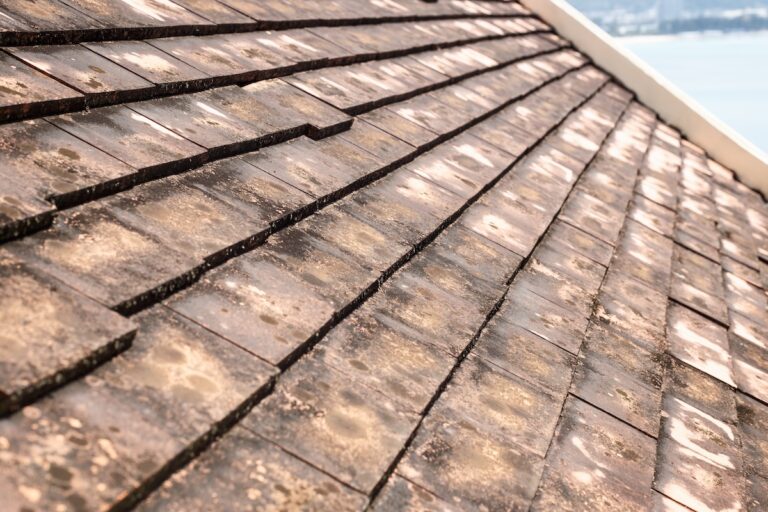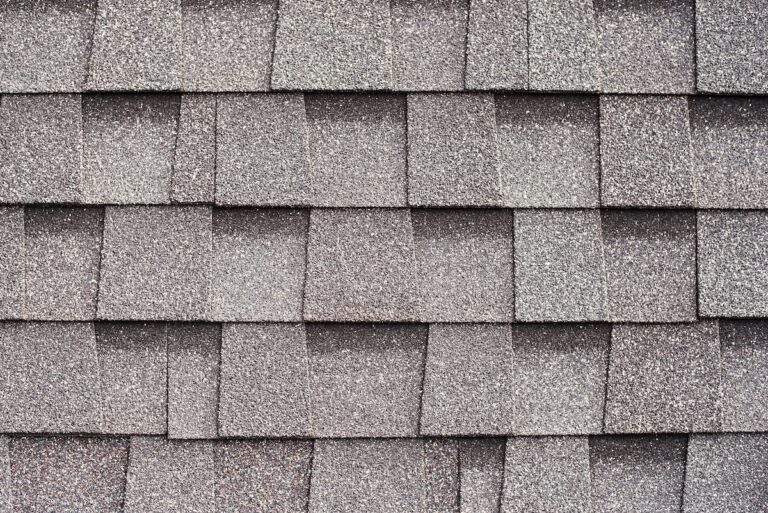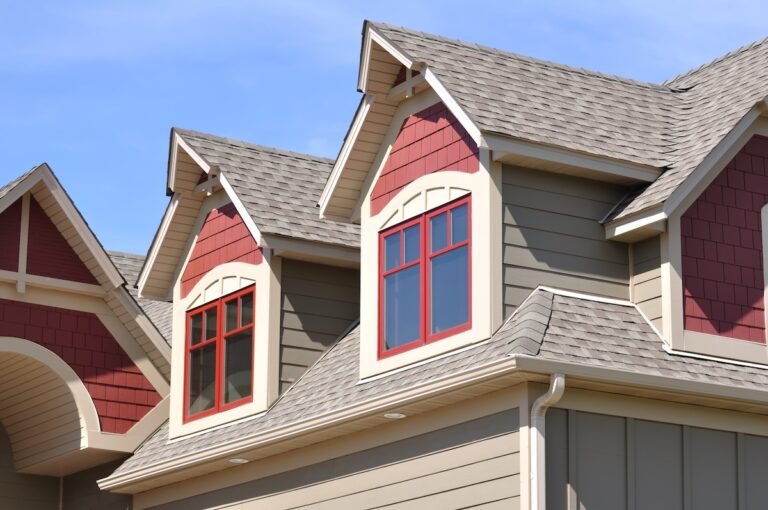If you’re budgeting for a new roofing system, understanding metal roof cost is crucial for making an informed decision—whether you’re replacing the roof on your home or upgrading a commercial property. Metal roofs are known for their durability, energy efficiency, and clean design, but the upfront investment can vary based on several key factors.
- Wide cost range: Prices differ based on project size, location, materials, and labor.
- Residential and commercial fit: Metal roofing systems are suited for homes, retail centers, warehouses, and more.
- Value over time: Higher initial costs are offset by long-term savings on repairs and energy bills.
This guide breaks down the nine most important cost drivers so you can budget accurately and choose the best metal roofing system for your needs.
💵 Average Metal Roof Costs (Residential and Commercial)
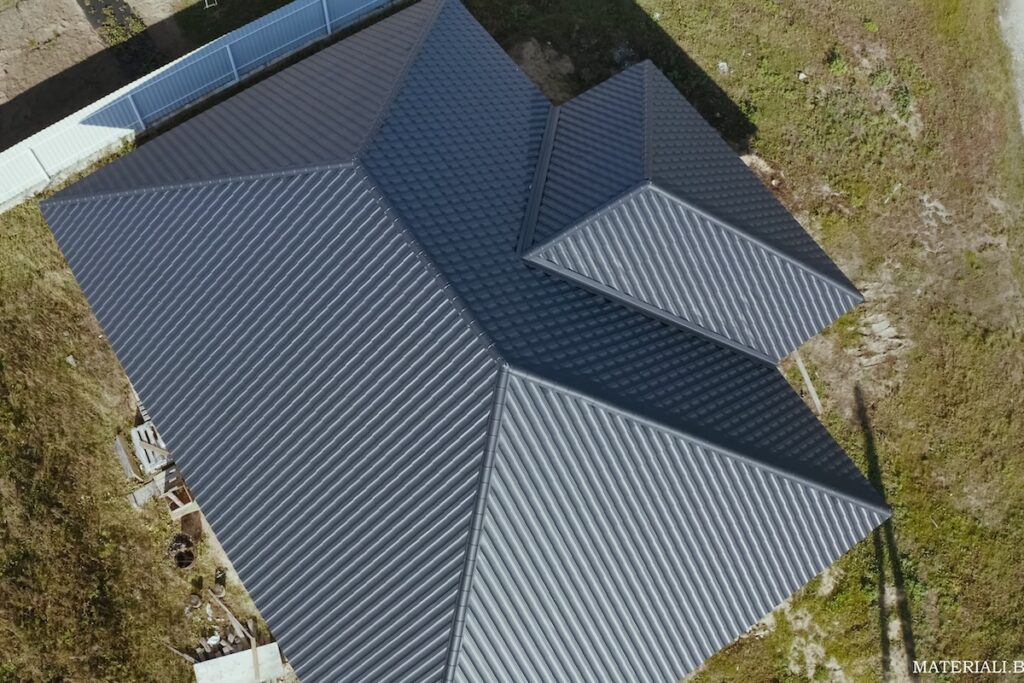
By Square Foot
- Residential: $9 to $16 per square foot installed
- Commercial: $7 to $14 per square foot installed (larger scale = cost savings per unit)
Prices vary by region, contractor, and the specific type of metal roofing system.
By Total Project Size
- Small residential home (1,500 sq. ft.): $13,500 to $24,000
- Medium commercial building (5,000 sq. ft.): $35,000 to $70,000
- Large commercial facility (20,000+ sq. ft.): $150,000 and up
These totals include materials, labor, underlayment, and accessories—but may increase with additional structural or insulation needs.
🏠 1. Roof Size and Complexity
Larger roofs naturally cost more, but size isn’t the only consideration. Complex rooflines with valleys, dormers, or intersecting planes require custom panel fitting and additional labor.
- Steep slopes: More challenging and time-consuming to install.
- Multi-facet roofs: Each plane adds time and materials.
- Overhangs and eaves: More trim pieces and flashing = higher costs.
✅ 2. Metal Type and Gauge
The type and thickness of the metal play a major role in pricing. Thicker metal (lower gauge numbers) offers more strength but is also more expensive.
- Galvalume steel: Common and cost-effective.
- Aluminum: Lightweight and corrosion-resistant—ideal for coastal areas.
- Copper or zinc: Premium metals that significantly raise project cost.
- 22- to 26-gauge panels: Thicker panels cost more but last longer.
⭐️ 3. Roofing System Type
Different panel designs come with different price tags and installation requirements.
- Standing seam: Clean look with hidden fasteners—more expensive but longer-lasting.
- Corrugated panels: Budget-friendly and faster to install, but with visible fasteners.
- Shingle-style metal roofing: Mimics traditional shingles for homeowners but at a higher price point.
- Commercial preference: Standing sea m is more common due to durability and energy performance.
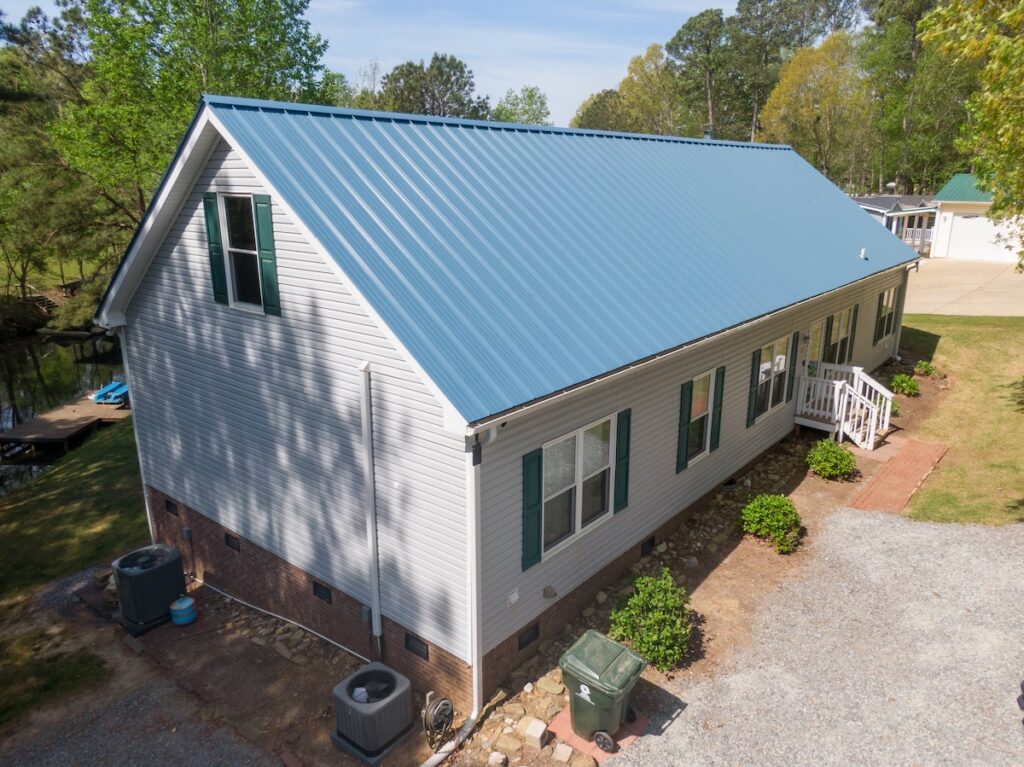
🪵 4. Insulation and Underlayment
Quality underlayment protects against moisture and improves energy efficiency. Commercial buildings often require more insulation for code compliance.
- Synthetic underlayments: Longer lifespan and better weather resistance than felt.
- Rigid board insulation: Often needed for commercial flat or low-slope roofs.
- Radiant barriers: Reflective layers that boost energy efficiency.
🛠️ 5. Tear-Off and Disposal of Old Roof
Removing old shingles, tar, or membranes adds labor and debris disposal fees. Some projects may allow metal to be installed over existing roofing, but this depends on local codes and roof condition.
- Residential tear-off cost: $1,000 to $3,000
- Commercial tear-off cost: $2,500 to $10,000+ depending on material and size
👷 6. Labor and Installation Complexity
Metal roofing requires specialized roof installation skills, particularly for standing seam systems and steep roofs.
- Contractor experience: Hiring a certified or specialized crew may cost more, but ensures quality and warranty compliance.
- Jobsite conditions: Hard-to-reach buildings, multi-story structures, or limited access raise labor hours.
📍 7. Geographic Location
Pricing can vary significantly based on where your property is located. Labor rates, building codes, and material availability all play a role.
- Urban areas: Higher labor costs due to demand and overhead.
- Rural areas: Lower labor but potentially higher material transport fees.
- Weather-prone regions: Additional bracing or impact-rated panels may be required.
🎨 8. Coatings and Paint Finishes
Protective finishes affect both performance and aesthetics. Better coatings mean longer lifespan, reduced fading, and better resistance to rust and corrosion.
- Polyester (SMP): Affordable but may fade faster.
- PVDF (Kynar 500): Premium, fade-resistant coating ideal for residential and commercial properties alike.
- Cool roof coatings: ENERGY STAR-rated options reflect sunlight to improve energy savings.
📑 9. Warranties and Certifications
Some roofing systems come with enhanced warranties if installed by certified contractors. These often require higher upfront costs but offer better long-term peace of mind.
- Material warranties: Usually range from 20 to 50 years.
- Workmanship warranties: Depending on your contractor—G. Cannon includes coverage for qualified installations.
- Code compliance: Commercial installations often need special certifications for fire rating or wind uplift resistance.
⭐️ Cost-Saving Tips for Homeowners and Property Managers
- Bundle upgrades: If you’re replacing gutters or skylights, do it at the same time to save on labor.
- Plan off-season installs: Spring and fall may offer better pricing and availability.
- Ask about financing: G. Cannon offers flexible payment plans for both residential and commercial clients.
- Compare bids: Ensure your quote includes all aspects—tear-off, disposal, materials, labor, flashing, and warranty.
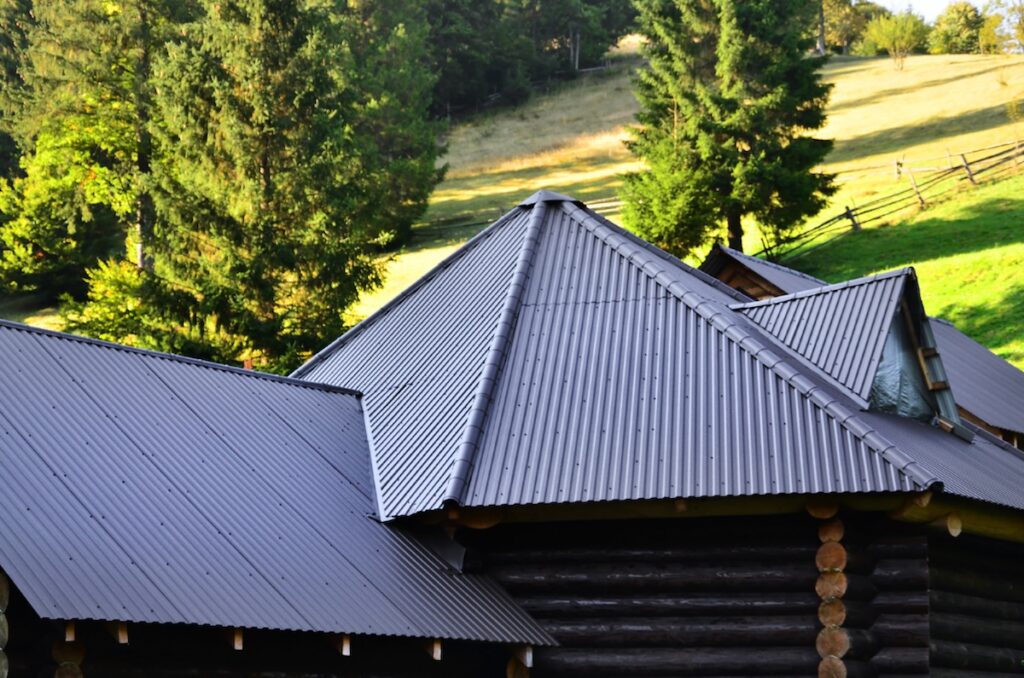
💵 Long-Term ROI of a Metal Roof
Though the metal roof cost is higher upfront, it offers outstanding long-term value for both homes and businesses.
- Durability: Expect 40–70 years of lifespan with minimal maintenance.
- Energy efficiency: Reflective coatings lower cooling costs.
- Resale value: Boosts curb appeal and marketability.
- Fewer repairs: No cracking, rotting, or shingle blow-offs in storms.
- Insurance perks: Some carriers offer discounts due to metal’s fire and impact resistance.
💪 Know the Cost, Maximize the Value
The true metal roof cost depends on several key factors—from panel type and qualified labor to building size and location. While the upfront cost may be higher than traditional roofing materials, metal provides exceptional return on investment through long-term performance, energy savings, and low maintenance.
Whether you’re a homeowner looking for peace of mind or a business owner seeking a reliable commercial roofing solution, G. Cannon is your trusted partner. Contact us today for a free estimate and let our experienced team help you make a roofing decision that lasts for decades.
